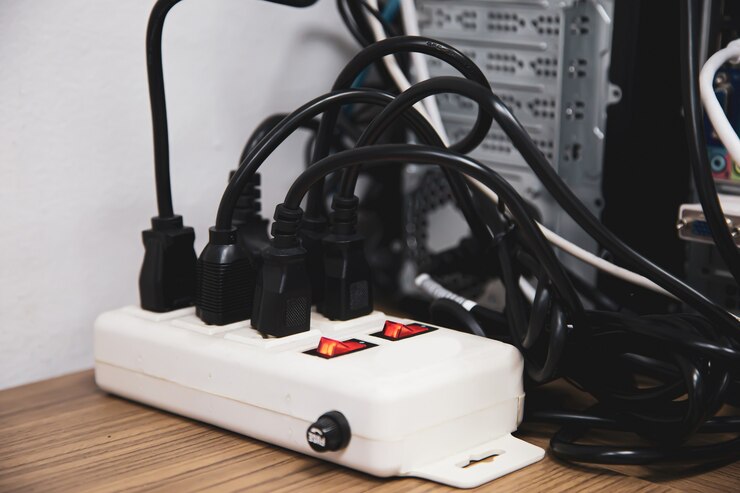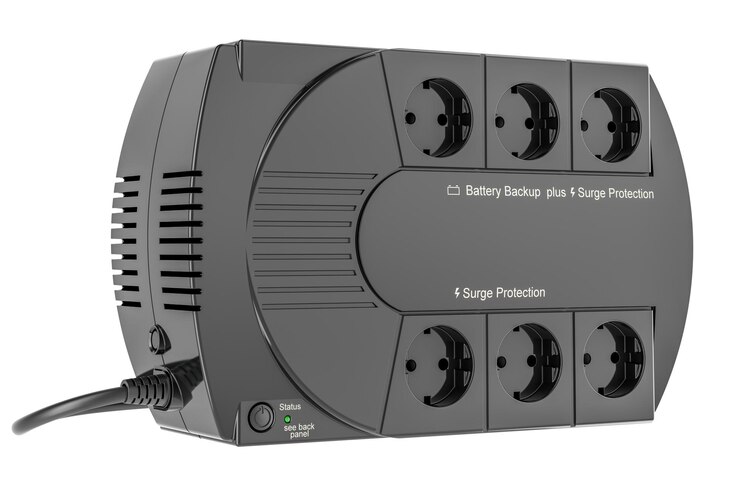Is a surge protector necessary?If you’ve ever worried about a sudden power outage or lightning strike frying your expensive electronics, you’re not alone. Power surges, both large and small, can silently damage everything from your smart TV to your gaming console, leading to costly repairs or replacements. This is where surge protectors step in as a critical safeguard, protecting your devices from voltage spikes and extending their lifespan.
In this article, we’ll answer the question “Is a surge protector necessary?” by exploring how they work, the risks of unprotected electronics, and five compelling reasons why every home should have them. You’ll also discover the types of surge protectors available, tips for choosing the right one, and how to maintain them for optimal performance. Whether you’re a homeowner with a smart home setup or simply want to protect your essential devices, this guide will help you make an informed decision.
Keep reading to uncover how surge protectors can save your electronics—and your wallet—from unexpected power issues while ensuring a safe, efficient electrical system in your home.
What Is a Surge Protector and How Does It Work?
Before diving into the reasons for their necessity, it’s important to understand what a surge protector does. A surge protector shields your electronics from voltage spikes—short bursts of excessive electrical energy that can damage or destroy your devices. These voltage spikes can result from lightning strikes, power outages, or even routine operations within your home.
Surge protectors work by diverting excess voltage to the ground, ensuring that only the normal amount of electricity reaches your devices. They act as a barrier, absorbing the excess energy and safeguarding your appliances and electronics from harm.
Why Are Voltage Surges Dangerous?
Voltage surges may seem like a rare occurrence, but they’re more common than you think. The effects can range from minor inconveniences to catastrophic damage:
- Instant Damage to Devices: A strong surge can fry internal circuits in a matter of milliseconds.
- Decreased Lifespan of Electronics: Even small surges gradually weaken electronic components, leading to premature failure.
- Fire Hazards: Electrical surges can overload circuits, increasing the risk of fires.
This brings us to the question: is a surge protector necessaryto protect your home and electronics? Let’s explore five undeniable reasons why the answer is a resounding yes.
5 Shocking Reasons You Need a Surge Protector
1. Protects Expensive Electronics
Your electronics represent a significant investment, and surge protectors offer an affordable way to protect them. From laptops and gaming consoles to refrigerators and smart home hubs, all modern devices are vulnerable to power surges. Without protection, a single surge could cost you thousands of dollars in replacements.
Real-Life Example:
Imagine you’re working on an important project on your computer when a storm causes a power surge. Without a surge protector, your computer’s internal components could be irreparably damaged, causing you to lose both the device and your data.
2. Shields Against Lightning Strikes
Lightning strikes are one of the most powerful causes of electrical surges. While rare, they can generate millions of volts, obliterating unprotected devices in an instant. A surge protector with adequate joule ratings can provide a vital line of defense against such extreme events.
Key Tip:
Look for a surge protector rated at least 1,000–2,000 joules for basic protection and 3,000+ joules for heavy-duty devices like refrigerators or HVAC systems.
3. Prevents Long-Term Damage to Electronics

Not all surges are catastrophic; most are small and go unnoticed. However, these minor surges can gradually degrade your electronics over time. This phenomenon, known as “electronic rust,” shortens the lifespan of your devices and can lead to unexpected failures.
Practical Insight:
Even if your electronics appear to work fine after a surge, internal components may have sustained damage. Surge protectors act as a buffer, preserving your devices’ health and longevity.
4. Ensures Safety During Power Outages
Power outages often lead to sudden voltage spikes when electricity is restored. These surges can damage devices that are plugged in when the power comes back on. A surge protector prevents these fluctuations from wreaking havoc on your electronics.
Did You Know?
Whole-house surge protectors installed at your main electrical panel can protect all the circuits in your home from such events.
5. Compliance with Smart Home Requirements
If you have a smart home setup, surge protection is non-negotiable. Smart home systems rely on interconnected devices, and a surge affecting one component could disrupt your entire system. Protecting your smart home hub, routers, and security cameras ensures your home automation continues to run smoothly.
Additional Benefit:
Many surge protectors come with multiple outlets and USB ports, allowing you to charge multiple devices while safeguarding them simultaneously.
Types of Surge Protectors
Not all surge protectors are created equal. Here are the main types to consider:
1. Basic Power Strip Surge Protectors
These are ideal for low-power devices like lamps and chargers. They’re affordable but offer limited protection against large surges.
2. Advanced Surge Protectors
Designed for high-end electronics, these models come with higher joule ratings and additional features like USB ports and Ethernet protection.
3. Whole-House Surge Protectors
Installed at the main electrical panel, these protect your entire home’s wiring and connected devices. While more expensive upfront, they offer comprehensive protection.
How to Choose the Right Surge Protector
When selecting a surge protector, consider the following factors:
Joule Rating
The joule rating indicates how much energy a surge protector can absorb before failing. Higher ratings offer better protection.
Number of Outlets
Choose a surge protector with enough outlets for your devices. Some models also feature USB ports for added convenience.
Response Time
Opt for surge protectors with fast response times to ensure your devices are protected immediately during a surge.
Certification
Look for UL (Underwriters Laboratories) certification to ensure the product meets safety standards.
Common Misconceptions About Surge Protectors
1. “Power Strips and Surge Protectors Are the Same Thing”
While they may look similar, not all power strips provide surge protection. Always check the product label for surge protection features.
2. “Surge Protectors Last Forever”
Surge protectors wear out over time as they absorb energy from surges. Replace them every few years or after a significant surge.
3. “I Don’t Need a Surge Protector in Rural Areas”
Even in rural areas, power surges can occur due to lightning, faulty wiring, or utility grid issues. Surge protection is essential no matter where you live.
Maintenance Tips for Surge Protectors

Replace After Major Surges
If your home experiences a significant power surge, replace your surge protector, even if it appears functional.
Monitor Indicator Lights
Many surge protectors have indicator lights that show whether they’re still providing protection. Replace the unit if the light goes out.
Avoid Overloading
Don’t plug too many high-power devices into a single surge protector. Overloading can reduce its effectiveness.
Key Takeaway: Essential Insights You Should RememberKey Takeaway
Investing in a surge protector is one of the simplest and most effective ways to protect your valuable electronics and ensure the safety of your home. By understanding the risks of power surges and choosing the right surge protector for your needs, you can prevent costly damage and enjoy peace of mind. Whether you’re a homeowner with a smart home setup or just someone who values their gadgets, surge protection is a necessity, not a luxury.
What are your thoughts on surge protectors? Do you already use one, or are you considering upgrading to a whole-house system? Share your experiences in the comments below and let’s discuss the best ways to keep our homes and devices safe.
People Also Ask
Can surge protectors prevent power outages?
No, surge protectors don’t prevent power outages but protect devices from voltage spikes when power is restored.
How do I know if my surge protector is working?
Check for indicator lights or test with a voltage meter. If the protector doesn’t show signs of functionality, replace it.
Are whole-house surge protectors worth the investment?
Yes, whole-house surge protectors provide comprehensive protection and are especially valuable in areas prone to frequent surges.
Do surge protectors use electricity?
Surge protectors consume minimal electricity, typically less than 1 watt, making them energy-efficient.
How long do surge protectors last?
Most surge protectors last 3–5 years, but their lifespan depends on usage and the number of surges absorbed.
Stay Safe and Protected: Contact Boca Electrical Services Today
Protecting your home and valuable electronics from power surges is more than a precaution—it’s a necessity. Surge protectors provide an affordable and effective solution to safeguard your devices and ensure a safe, efficient electrical system. At Boca Electrical Services, Inc., we specialize in professional surge protector installations tailored to meet your home’s unique electrical needs. With over 38 years of combined expertise, our team ensures your home is equipped with the right solutions to prevent costly damage and extend the lifespan of your electronics.
Explore more about electrical safety by visiting other sections of the Softlist website or contact Boca Electrical Services, Inc. today at +1 561-235-2513for expert advice and personalized recommendations. Stop by our office at 158 NW 16th St #2, Boca Raton, FL 33432, United States, and let us help you secure your home with reliable surge protection. Don’t wait for a power surge to strike—take proactive steps now to protect your investment and gain peace of mind.